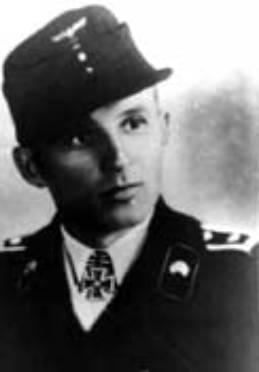Years of service 1935–45
1956–70 Service/branch German Army | Name Hermann Bix Unit 4th Panzer Division | |
 | ||
Born 10 October 1914
Strehlitz ( 1914-10-10 ) Allegiance Nazi Germany (to 1945)
West Germany Battles/wars World War II
Invasion of Poland
Battle of France
Operation Barbarossa
Battle of Bialystok–Minsk
Battle of Kiev (1941)
Battle of Moscow
Battle of Radzymin (1944)
Courland Pocket Died July 31, 1986, Wiesbaden, Germany Awards Knight's Cross of the Iron Cross Battles and wars Invasion of Poland, Battle of France Rank Oberfeldwebel (Wehrmacht), Feldwebel (Bundeswehr) | ||
Hermann Bix (10 October 1914 – 31 July 1986) was a highly decorated panzer ace in the Wehrmacht. He was also a recipient of the Knight's Cross of the Iron Cross. The Knight's Cross of the Iron Cross was awarded to recognise extreme battlefield bravery or successful military leadership.
Contents
Biography
Hermann Bix was born on 10 October 1914 in Strehlitz in the region of Silesia. He attended vocational school for mechanical engineering and later joined the Wehrmacht in 1935. He served in the Invasion of Poland and Battle of France. In June 1941 he took part in Operation Barbarossa, the invasion of the Soviet Union. On 20 October 1941 he was awarded the Iron Cross I and II. Class. On 22 August 1942 he stepped on a mine and was wounded. Evacuated to Germany he was awarded the German Cross in Gold on 5 November 1942. He spent eighteen months training cadets.
Bix returned to the Eastern Front and joined the Panzer-Regiment 35 attached to the 4th Panzer Division. He fought with the Division under the command of Army Group Centre until August 1944 in command of a Panther tank. Transferred to Army Group North he fought defensive battles against the Soviet offensive Operation Bagration. In August he was wounded in action and received the wound badge in Silver and Panzer Assault Medal Second Class.
In October 1944 the Division was engaged in the fighting around Danzig in East Prussia. His unit was re-equipped with the Jagdpanther tank destroyer. From January to May 1945, his unit was caught in the Courland pocket. He was awarded the Knight's Cross of the Iron Cross on 22 March 1945 and before the end of the war he was named an officer cadet.
In 1956 he joined the Bundeswehr and served until 1970, retiring as an Oberstabsfeldwebel (Sergeant Major).
